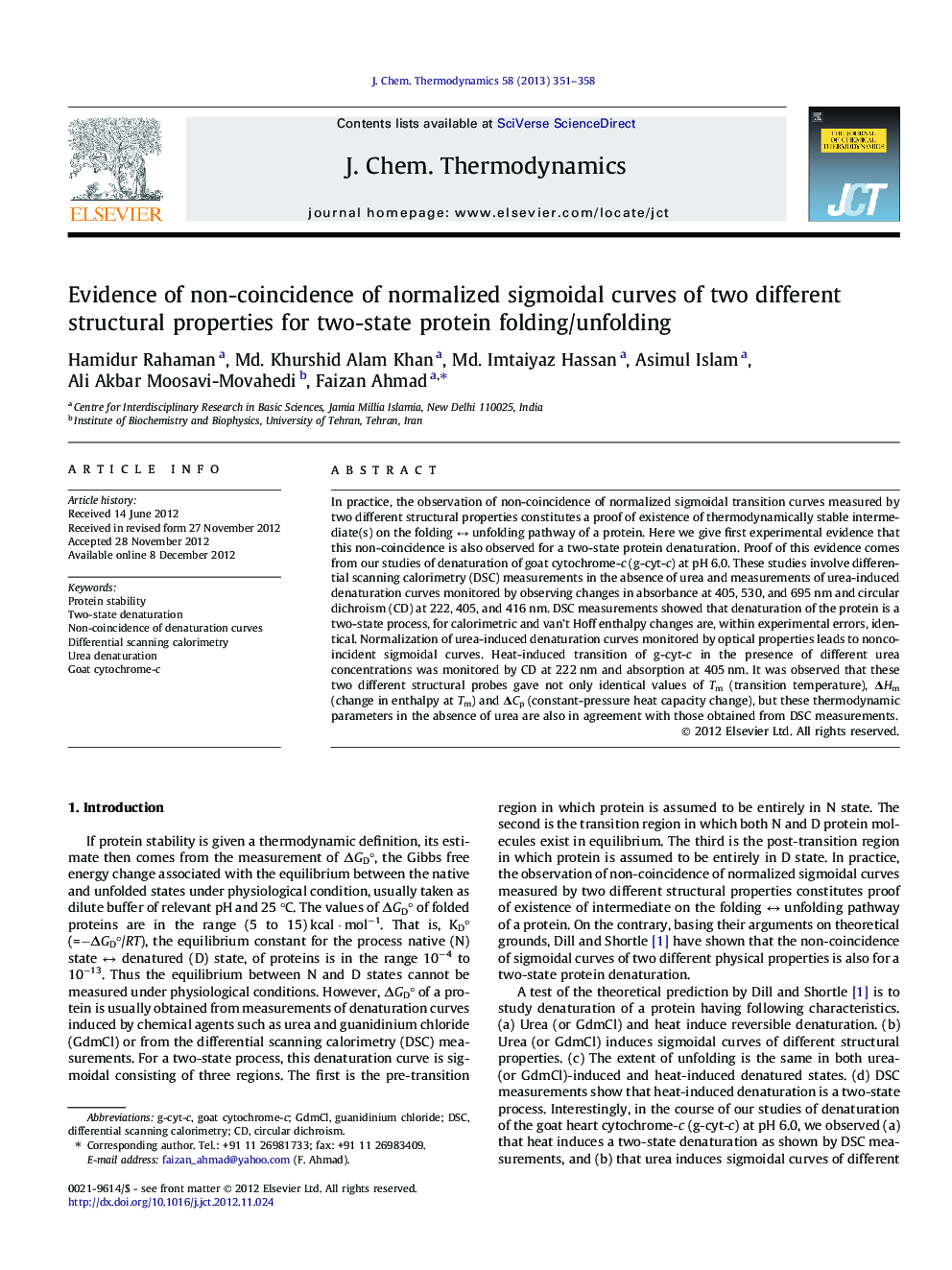| کد مقاله | کد نشریه | سال انتشار | مقاله انگلیسی | نسخه تمام متن |
|---|---|---|---|---|
| 215835 | 1426255 | 2013 | 8 صفحه PDF | دانلود رایگان |

In practice, the observation of non-coincidence of normalized sigmoidal transition curves measured by two different structural properties constitutes a proof of existence of thermodynamically stable intermediate(s) on the folding ↔ unfolding pathway of a protein. Here we give first experimental evidence that this non-coincidence is also observed for a two-state protein denaturation. Proof of this evidence comes from our studies of denaturation of goat cytochrome-c (g-cyt-c) at pH 6.0. These studies involve differential scanning calorimetry (DSC) measurements in the absence of urea and measurements of urea-induced denaturation curves monitored by observing changes in absorbance at 405, 530, and 695 nm and circular dichroism (CD) at 222, 405, and 416 nm. DSC measurements showed that denaturation of the protein is a two-state process, for calorimetric and van’t Hoff enthalpy changes are, within experimental errors, identical. Normalization of urea-induced denaturation curves monitored by optical properties leads to noncoincident sigmoidal curves. Heat-induced transition of g-cyt-c in the presence of different urea concentrations was monitored by CD at 222 nm and absorption at 405 nm. It was observed that these two different structural probes gave not only identical values of Tm (transition temperature), ΔHm (change in enthalpy at Tm) and ΔCp (constant-pressure heat capacity change), but these thermodynamic parameters in the absence of urea are also in agreement with those obtained from DSC measurements.
► Non-coincidence of normalized sigmoidal curves of two different structural properties is consistence with the two-state protein folding/unfolding.
► DSC measurements of denaturation show a two-state behavior of g-cyt-c at pH 6.0.
► Urea-induced denaturation of g-cyt-c is a variable two- state process at pH 6.0.
► GdmCl-induced denaturation of g-cyt-c is a fixed two- state process at pH 6.0.
Journal: The Journal of Chemical Thermodynamics - Volume 58, March 2013, Pages 351–358